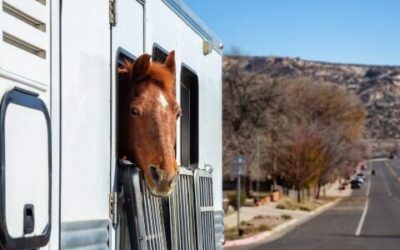
Whether you’re a seasoned equestrian or a new horse owner, you need to prepare for emergencies that can arise unexpectedly. Having a well-equipped equine first aid kit is a vital part of responsible horse ownership. In this blog post, we’ll discuss equine first aid kit essentials to ensure the safety and well-being of your beloved equine companion.
The Importance of an Equine First Aid Kit
Accidents can happen anytime and anywhere, even in the safest of environments. When it comes to your horse’s health, being prepared can make a significant difference in the outcome of an emergency. Having a well-stocked first aid kit can mean the difference between a quick recovery and a more serious injury. Here’s a checklist of the different equine first aid kit essentials:
Equine First Aid Checklist
Bandages and Wraps
- Sterile gauze pads
- Self-adhesive bandages (Vet Wrap)
- Elastic bandages (like Ace bandages)
- Adhesive tape
Wound Cleaning Supplies
- Antiseptic solution or wipes
- Hydrogen peroxide (to clean wounds)
- Betadine solution (for disinfection)
- Saline solution (for flushing wounds)
Tools and Instruments
- Scissors (for cutting bandages and tape)
- Tweezers (for removing splinters or foreign objects)
- Thermometer (digital or mercury-free)
- Flashlight (with extra batteries)
- Hoof pick
Medications and Ointments
- Antibacterial ointment or cream
- Anti-inflammatory medication (as prescribed by your vet)
- Pain relievers (only if advised by your vet)
- Electrolyte paste or powder
Emergency Contact Information
- Contact numbers for your veterinarian
- Contact numbers for the nearest equine hospital or clinic
- Contact numbers for friends or family who can assist in an emergency
- Disposable Gloves
- Cotton Balls and Swabs
- Thermometer
- Syringes and Needles
- Epsom Salt
- Forage Feed
Maintaining Your Equine First Aid Kit
Once you’ve assembled your equine first aid kit, you must keep it well-maintained. Here are some tips for ensuring your kit is always ready for use:
Regularly Check and Restock: Inspect your first aid kit periodically to ensure that all items are within their expiration dates and in good condition. Replace any used or expired items promptly.
Know How To Use Your Kit: Familiarize yourself with the contents of your first aid kit and how to use them properly. Enroll in a course to learn proper equine first aid if you’re not already knowledgeable in this area.
Store Properly: Keep your first aid kit in a cool, dry place, and make sure it’s easily accessible in case of an emergency. Make sure everyone involved with the care of your horse knows where it is located.
Regularly Update Contact Information: Ensure that your emergency contact information is up to date, including your veterinarian’s phone number and the nearest equine hospital’s contact details.
Consider Tailoring Your Kit: Depending on your horse’s specific needs and ongoing health concerns, you may need to customize your first aid kit further. Consult with your veterinarian for guidance on specific items or medications to include.
An equine first aid kit is an essential tool for any horse owner. It can provide you with the means to respond effectively in the event of an injury or illness. Remember that while having a well-stocked first aid kit is crucial, it should not substitute for professional veterinary care. Always consult with your veterinarian for any serious injuries or health concerns. Being prepared can make all the difference in ensuring the health and well-being of your beloved horse, so take the time to assemble and maintain your equine first aid kit today. Your horse will thank you for it.




